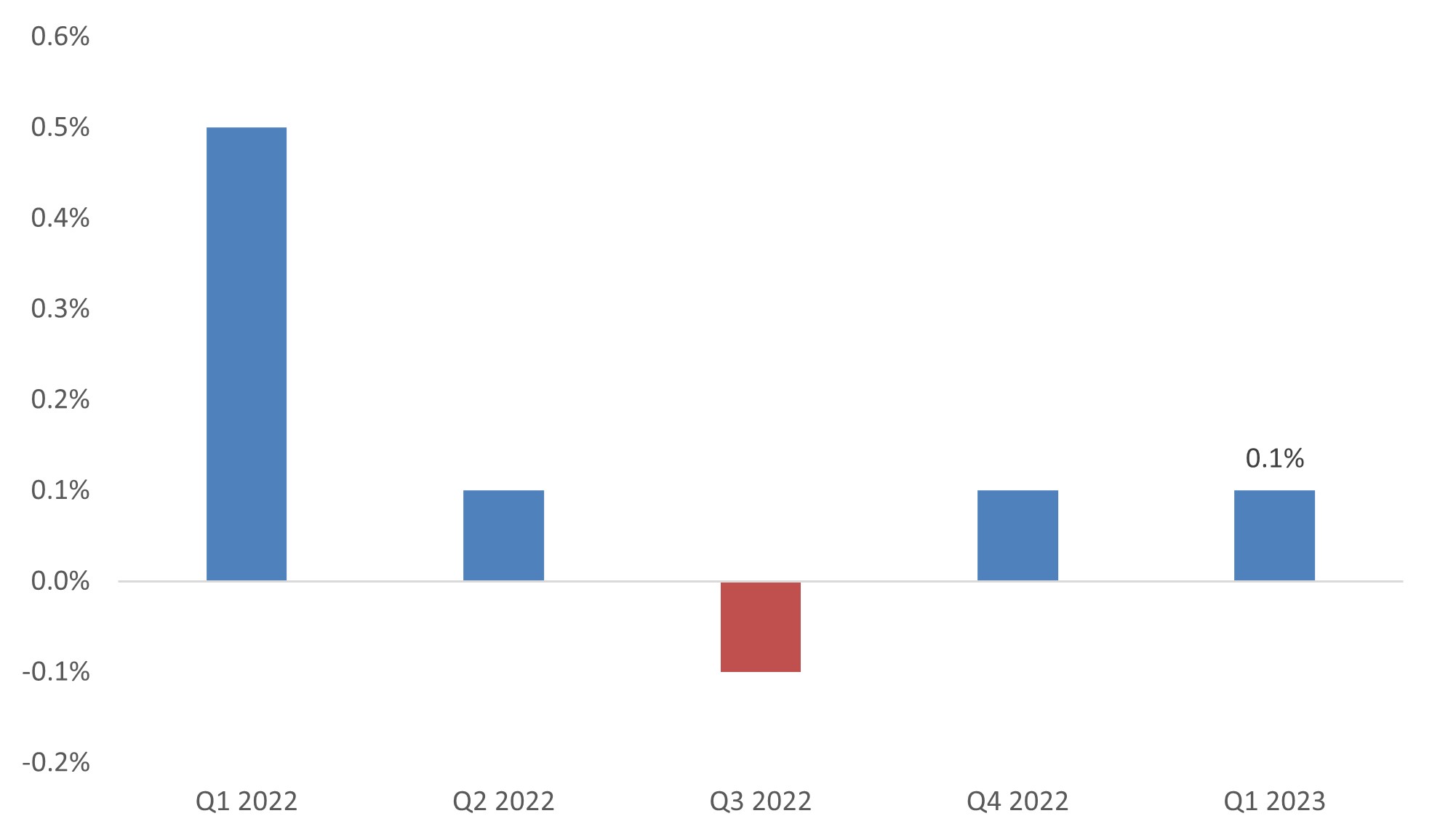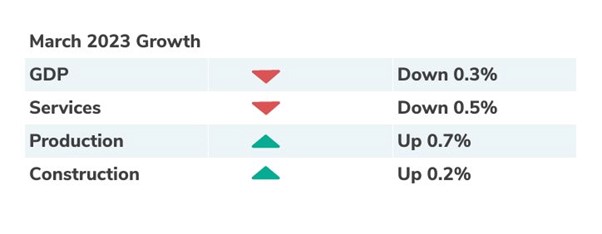GDP Q1 2023 Preliminary Estimate
GDP
- Quarterly GDP is estimated to have increased by 0.1% in Q1 2023 (Jan to Mar), following 0.1% growth in Q4 2022.
- Despite expanding slightly over the last two quarters, avoiding a winter recession, the UK is still bottom of the G7 league table for growth since the Covid-19 pandemic. The UK economy remains 0.5% smaller than in Q4 2019 – just before Covid-19 hit the global economy.
- On a monthly basis, GDP fell by 0.3% in March, following an increase of 0.5% in January, and no growth in February.
GDP rose overall in Q1 2023, but shrank unexpectedly in March amid strike action

Source: ONS
GDP breakdown by sector
Services
- Services output rose by 0.1% in Q1 2023, following a 0.1% increase in Q4 2022.
- On a monthly basis, services declined 0.5% in March, dragged down by a 1.4% fall in the wholesale and retail trade. Despite the launch of new number plates, cars sales were low by historic standards – continuing the trend seen since the start of the pandemic – with warehousing, distribution and retail also having a disappointing month.
- Overall, consumer-facing services detracted from growth in Q1 2023, falling by 0.4% while all other services increased by 0.2%.
- The main growth drivers in Q1 were the information and communication sub-sector (1.2%), and administrative and support service activities (1.3%).
- However, these increases were partially offset by declines in education (0.7%), health (0.5%), public administration and defence (0.7%), and transport and storage (1.0%). These are areas that saw industrial action take place across the quarter.
Production
- Production output also increased 0.1% in Q1 2023. This follows no growth in the previous quarter and five consecutive falls before that. On a monthly basis, Production rose 0.7% in March.
- The increase in production in Q1 was mainly driven by an increase of 0.5% in manufacturing. There were increases in 8 out of the 13 sub-sectors, with the largest positive contribution from the manufacture of basic metals and metal products, and the manufacture of computer, electronic and optical products.
- However, this was partly offset by decreases in the manufacture of basic pharmaceutical products and pharmaceutical preparations (-12.9%).
Construction
- Construction output increased by 0.7% in Q1 2023, the sixth consecutive quarter of positive growth. On a monthly basis, construction output increased by 0.2% in March.
- Growth in Q1 was driven by repair and maintenance, which grew by 4.9%. This was partially offset by a fall of 1.9% in new work.
- Anecdotal evidence from the Monthly Business Survey for Construction and Allied Trades (MBS) suggested an easing of inflation and material costs. Despite this, some businesses still noted customers hesitating to request work because of economic worries.

Household consumption
- In current price terms, household consumption rose by 1.2% in Q1, as inflationary pressures increased the nominal value of spending.
- Excluding the impact of inflation, real household expenditure saw zero growth, following 0.2% growth in the previous quarter, as household incomes continue to be squeezed by high inflation.
- The implied price of household expenditure increased by 9.4% when compared with Q1 last year. This marks an easing compared to Q4 (10.3%), but the rate of the price change in household expenditure remains high by historical standards.

